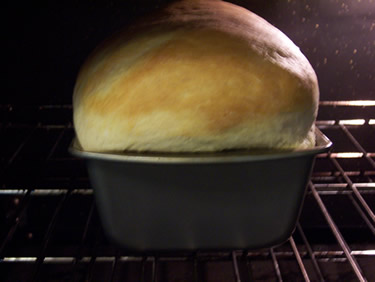Is a bread being baked a physical or chemical change?
1 Answer
The baking of bread involves both physical and chemical changes.
Explanation:
Physical changes
1. Expansion of carbon dioxide
The carbon dioxide trapped in the dough expands as the temperature rises.
2. Evaporation of liquids
The water and the ethanol formed by the yeast action evaporate and their vapours expand in the dough.

Chemical changes
1. Yeast activity
The yeast produces more
2. Gluten coagulation
The gluten in the flour degenerates as water is baked off.
3. Amylase activity
The action of amylase on starch increases as the temperature increases and slows to a stop at about 95 °C.
4. The Maillard reaction
Between 140 °C and 165 °C, there is a chemical reaction between amino acids and reducing sugars. The reaction gives browned food a distinctive flavour.
5. Sugar caramelization
At around 170 °C, the sugar molecules polymerize to form coloured substances called caramels, which contribute a sweet nutty flavour and brown colour.

